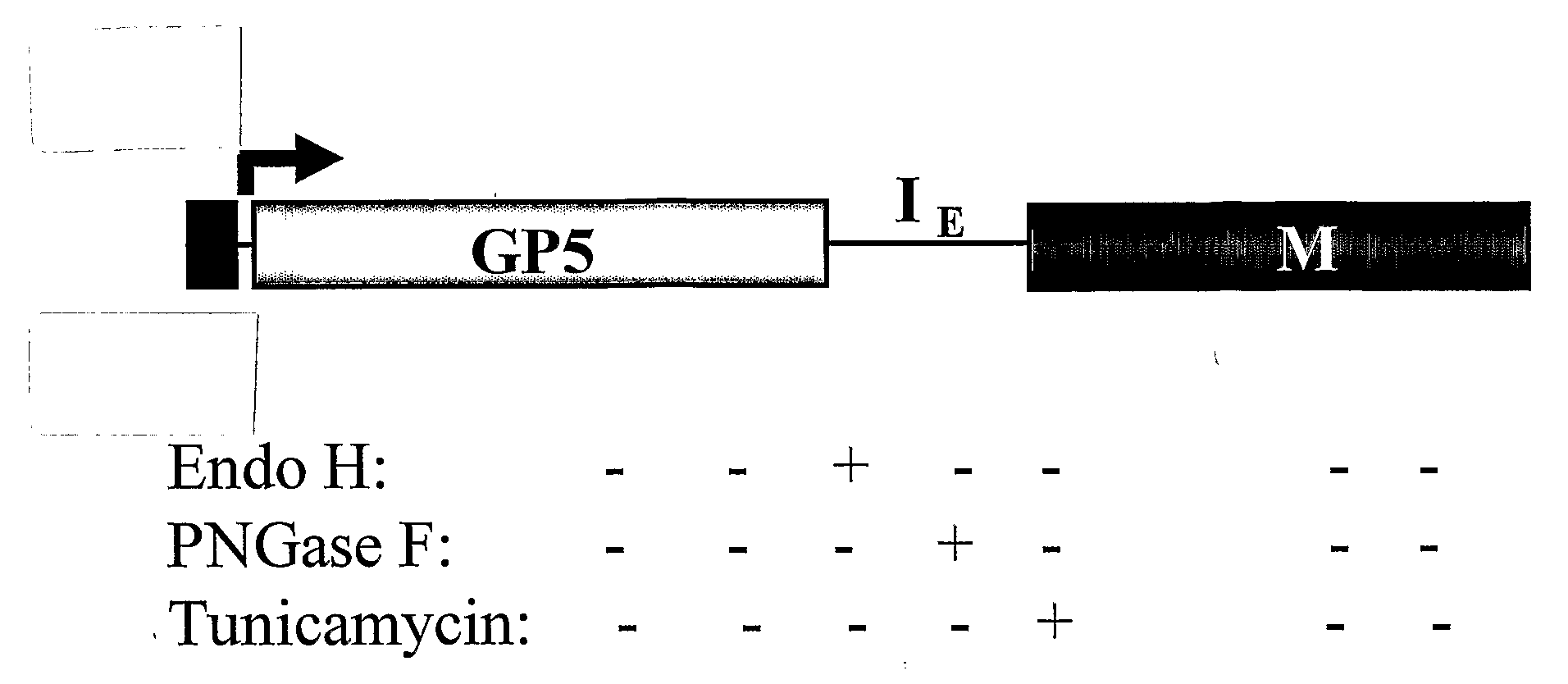Methods and Compositions for Vaccination of Animals with Prrsv Antigens with Improved Immunogenicity
a technology of antigens and compositions, applied in the field of compositions, can solve the problems of prrsv itself, ineffective current commercially available vaccines, and reproductive failure, and achieve the effect of increasing the level of prrsv-neutralizing antibodies
- Summary
- Abstract
- Description
- Claims
- Application Information
AI Technical Summary
Benefits of technology
Problems solved by technology
Method used
Image
Examples
example 1
[0078]The following example illustrates the construction of various PRRSV polynucleotides that encode various hypoglycosylated North American PRRSV GP5 polypeptide variants, compositions including such polynucleotides that are used to elicit improved immune responses to a PRRSV antigen, and methods of using the polynucleotides and compositions to elicit an improved immune response in a pig to a PRRSV antigen.
Materials and Methods
[0079]Cells, media, and antibodies. The MARC-145 cells were propagated in Dulbecco's Modified Eagle's Medium (DMEM) containing 10% fetal bovine serum (FBS) and 100 units of penicillin, 20 units of streptomycin and 20 units of kanamycin per ml of growth medium. These cells were used for RNA electroporation, virus infection, viral growth, and plaque assays. The baby hamster kidney (BHK-21) cells were maintained in Minimal Essential Medium (MEM) with Earl's salt containing 5% FBS and the above mentioned antibiotics. BHK-21 cells were used for transient expressi...
example 2
Identification of N-linked Glycosylation sites in North American and European PRRSV Isolates
[0113]To identify N-linked glycosylation sites corresponding to asparagine 34 or asparagine 51 in a reference GP5 protein of SEQ ID NO:1 that can be inactivated and used in the methods of this invention, the GP5 proteins of either a desired North American PRRSV isolate (FIG. 5) or a European PRRSV isolate (FIG. 6) are aligned with reference GP5 protein of SEQ ID NO:1 (North American strain NVSL 97-7895). In this example, the alignments were created with the MegAlign™ program from DNASTAR, Inc. (Madison, Wis., USA) using the Jotun-Hein method of alignment (Hein, J. J. In Methods in Enzymology, Vol. 183: pp. 626-645, 1990). Multiple sequence alignment parameters were a gap penalty of 11 and a gap length penalty of 3. For pairwise comparisons, a Ktuple value of 2 was used.
[0114]In FIG. 5, it is clear that the N-linked glycosylation site corresponding to asparagine 51 of the reference GP5 protein...
PUM
| Property | Measurement | Unit |
|---|---|---|
| concentration | aaaaa | aaaaa |
| pH | aaaaa | aaaaa |
| pH | aaaaa | aaaaa |
Abstract
Description
Claims
Application Information
 Login to View More
Login to View More - R&D
- Intellectual Property
- Life Sciences
- Materials
- Tech Scout
- Unparalleled Data Quality
- Higher Quality Content
- 60% Fewer Hallucinations
Browse by: Latest US Patents, China's latest patents, Technical Efficacy Thesaurus, Application Domain, Technology Topic, Popular Technical Reports.
© 2025 PatSnap. All rights reserved.Legal|Privacy policy|Modern Slavery Act Transparency Statement|Sitemap|About US| Contact US: help@patsnap.com



